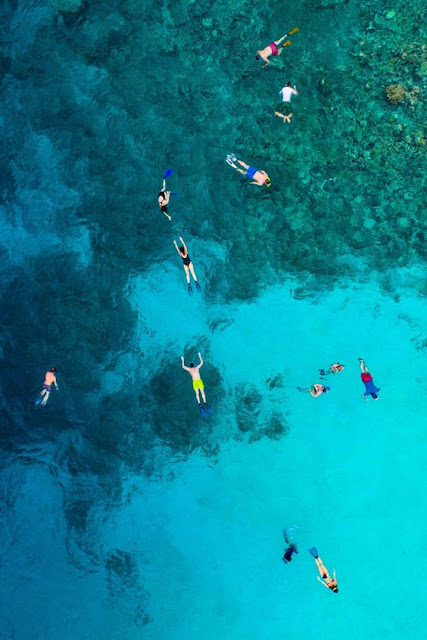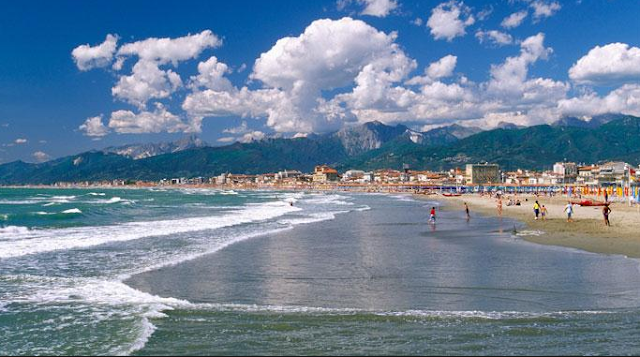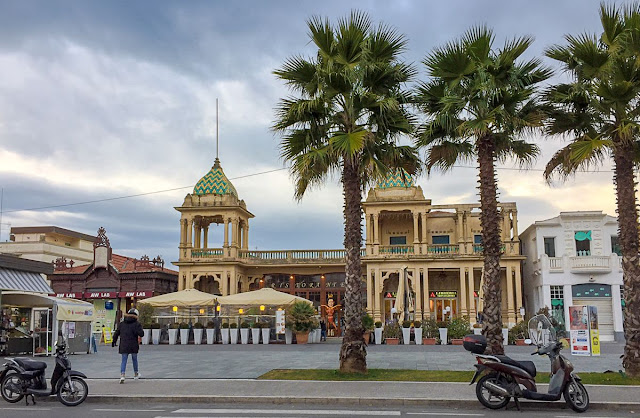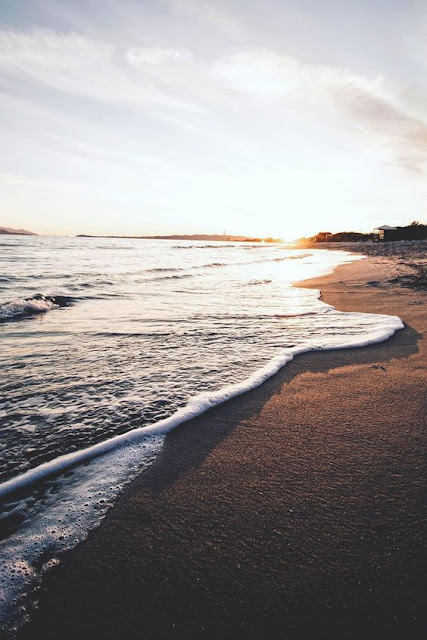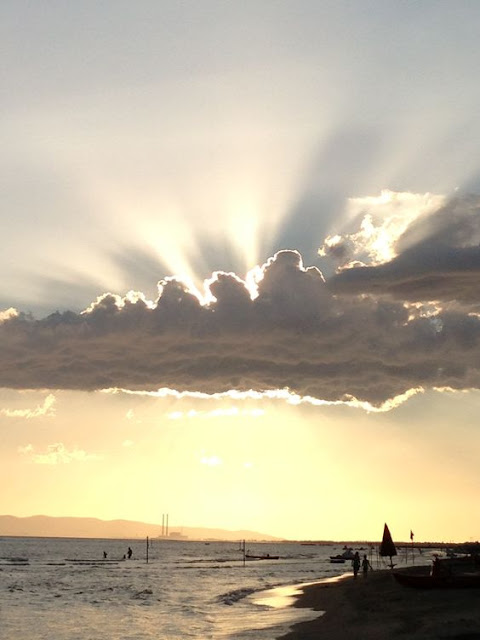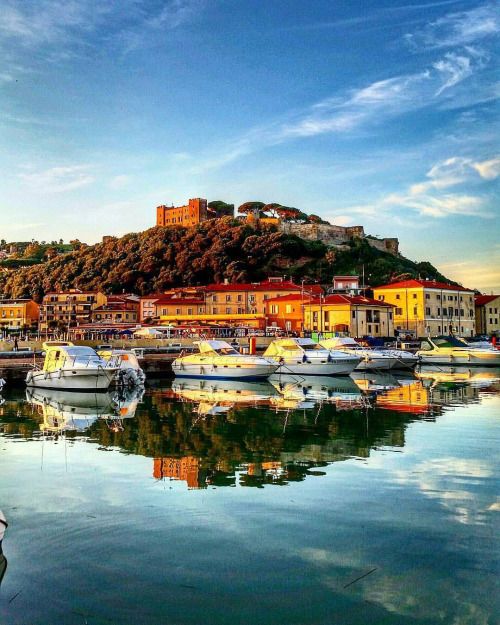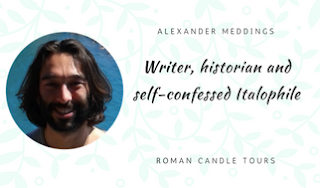The Best Beach Trips From Florence
Florenceis a stunning city, and it’s little wonder its timeless treasures attract tourists all year round. The city is serenely atmospheric around Christmasand abuzz with festivities over Easter. But beautiful though it may be bathed in light during the summer, in the heat it can get pretty oppressive.
As the blazing sun beats down on Florence’s cobbled streets, temperatures can soar to the mid- to high-thirties, driving groups of long-suffering tourists into the nearest designer shops to exploit the air conditioning that’s been generously laid on for them.
The Italians know better than any that their cities weren’t built for summer. That’s why in August there’s a mass exodus to the coast or mountains, culminating on the 15th with the public holiday of ferragosto—a tradition dating back to the first years of the Roman Empire and originating with the emperor Augustus himself.
When you think Italian beaches, you probably don’t think about Tuscany. But the region isn’t just rolling hills and lush, ripe vineyards. Tuscany is second only to Liguria for having the most Blue Flagbeaches (beaches recognised as having the cleanest waters). And as the entire west of Tuscany borders the Tyrrhenian Coast, the question is not whether you should make a beach trip but which beach you should visit.
If you’re coming to Italy during the spring and summer months, we’ve written this guide just for you. It’s a descriptive list of some of the best beach trips from Florence, handpicked by us at Roman Candle Tours, and chosen on the basis of natural beauty, affordability, and convenience.
Castiglioncello
A picturesque seaside village of holiday homes and pinewoods, Castiglioncello first came to prominence in the early twentieth century as a fashionable, peaceful bathing resort for the discerning townspeople of Tuscany.
Castiglioncello is perfect for snorkelers, divers, and serious swimmers. Unlike most beaches on the flat-shelved Etruscan and Tyrrhenian coast, Castiglioncello’s waters will quickly take you out of your depth. And the tresasures in its waters are there to find. Amongst its highlights are the remains of a port dating from the second century AD, and a labyrinth of shallow rocky reefs falling away into the deep blue.
When the wind’s up Castiglioncello is also a popular surfing spot, especially the area known as “Rocky Point” (so called because of the striking similarity it bears to the famous surfing spot in Hawaii).
Unless you’re planning to park yourself for the day on the village’s main sandy beach, make sure you pack flip-flops. The headland spanning Castiglioncello’s main promontory is a rocky, almost lunar surface that calls for some nimble climbing and stable footwork.
Should you wish to embrace your inner mountain goat, however, the venture is well worth it. Some of Castiglioncello’s best-kept secrets are securely out of sight: aquamarine rock pools deep enough to swim that offer a solitary haven from the hustle and bustle of the main crowded beach.
Getting to Castiglioncello from Florence is easy. The hour and forty minute train journey from Florence (with a quick change at Pisa) will set you back just under €12 each way, and from the station it’s just a five minute walk to either the beach or the various bars and restaurants situated in the centre of the village.
Viareggio
With the Tyrrhenian’s white surf to the west and the imposing peaks of Massa Carrara to the east, Viareggio has long been a popular destination for those wanting to escape the city for some sea, sun, and swimming.
In its heyday Viareggio was the one of the trendiest resorts in Italy. At the coastal heartland of Italian chic, the “Pearl of the Tyrhennian Sea” was easily on a par with its “Pearl of the Adriatic’” equivalent: Venice’s Lido.
During the twentieth century, figures like Puccini whiled away time along its three-kilometre promenade, La Passeggiata, watching the world go by over a coffee or a delectable seafood meal (never the two together mind you).
People still travel from across the country to visit Viareggio’s 10-kilometre stretch of sandy shores. During the day, families play on its beaches, paddle in the shallow surf, and set up camp along any coast-hugging stretch of its natural park.
By night, however, its Italy’s young and beautiful that throng its streets, indulging in its famous nightlife and creating an exciting buzz around the city’s already vibrant atmosphere.
Reaching Viareggio is easy from Florence. Being situated in the province of Lucca means it’s just an hour’s drive or train ride from Florence’s Santa Maria Novella. The public beach is close to the train station too, making it the perfect hassle-free beach trip from Florence.
Follonica
Few outside Italy have ever heard of Follonica: somewhat surprising given its far-stretching sandy beach and crystal clear waters (qualities that make it the ideal spot for water sports and guarantee that when the wind’s up it’s awash with windsurfers). In another sense it’s comforting, not least because it means if you visit you’ll be immersed in the real Italian experience, and surrounded by those who know where to go.
Follonica’s main beach is great for kids. Its soft sandy beach slopes into shallow waters, giving them the option to paddle (and for you to do the same). And should, for any reason, your kids get bored of spending time on the beach, there’s a fantastic water park nearby, Acqua Village Follonica, which has attractions to suit all ages. Which is to say that they might not to be the first ones wanting to leave!
Lunch options in Follonica are just as you’d expect from an Italian seaside town. From fine seafood dining with a view overlooking the Tyrrhenian, to a more budget-friendly option offering similarly delicious fresh fish a little further back in the town, there’s a wealth of choices to suit every palette. Just don’t make the same mistake I did and load up on fried food before taking to the water.
The best way to get to Follonica is to catch a train from Florence’s main station, Santa Maria Novella. The journey takes two and a half hours each way, normally including a change at Pisa, and a single ticket will set you back just over €16 (meaning it’s worth setting off early and staying until late to make the most out of your day at the beach).
Castiglione della Pescaia
Once in the heartlands of Tuscany’s wild west, with malaria infested swamps and livestock-thieving bandits roaming unchecked, the coastal region of Maremma in southwestern Tuscany has evolved to become one of the most desired coastal retreats in Italy. Fewer of its offerings are more popular than Castiglione della Pescaia, a humble fishing town with some of the most beautiful beaches in Italy.
Castiglione della Pescaia has a fully functioning fishing port, which brings in daily catches of fresh fish for the towns many seafront restaurants. But the continued use of the port takes nothing away from the quality of its water, which is beautifully clear and, in summer, welcomely refreshing.
The best beach in Castiglioncello is la spiaggia di ponente: a lengthy stretch of fine white sandy shoreline with crystal clear waters and no strong currents. It’s easily walkable from the town centre, though the bars and restaurants that line it offer excellent lunch options (their quality and price assured by the fact that their only clientele are Italians who refuse to pay tourist prices).
The only setback with Castiglione della Pescaia is that, like all beach destinations in Maremma’s lush and wild countryside, it’s fiendishly difficult to get to. To get there you’ll have to hire a car or a private driver, just as you’ll have to do to reach the final destination on our list, Monte Argentario (though its reputation as one of the best beach destinations in Italy makes the journey well worthwhile).
Monte Argentario
Halfway between Rome and Pisa on a mountainous peninsula connected to the mainland via two isthmuses, Monte Argentario is the only destination in Central Italy whose waters rival those of Sardinia or Sicily.
Argentario takes its name from the ancient moneylenders (argentarii) who financed the Roman Republic during its wars against Carthage. Fast-forward thousand years and, besides the politics, little has changed; the island’s still the favoured retreat of the Roman and Tuscan wealthy, and still linked to the mainland by the same sandy isthmuses.
When it comes to beauty, Argentario is simply without peer—certainly in Tuscany and Lazio; arguably in the entire country north of Puglia and Calabria). Pine forests coat most of the island, dotted by the hidden holiday homes of the rich and famous (including a certain Mr. Gucci). Hugging its coastline are hidden rocky beaches, as well as the more famous yachtie retreats of Porto San Stefano and Porto Ercole.
From either village, you can rent a boat to explore some of the more out of reach beaches around Argentario: cala grande(the “big cove”), cala piccola (the “small cove”), and the stunning isola rossa (“Red Island”). Come to Porto Ercole in late July and you can also experience the sagra della sardella, a food festival serving up sardines and other local seafood.
As an unspoilt spot of paradise, you can’t but appreciate Argentario. But such aesthetic appeal comes at a price: the cost of which is accessibility. To get to Argentario you need a car; to get around Argentario you need nerves of steel (especially with the hairpin bends of the stunning Via Panoramica); and to make the most of Argentario and its coastline you ideally need a boat.
If you don’t fancy going it alone, we’d be happy to organise a private driver for you, and because it’s so close to the capital Argentario could just as easily be a da trip from Rome as well as from Florence. Or, if you don’t feel like venturing onto the island itself, you can always stop off at Feniglia beach, a 10km sandy stretch of coastline linking Argentario to mainland Italy.
Roman Candle Tours in Tuscany
Roman Candle Tours runs a number of private tours in Tuscany. On one of our most popular itineraries in the regional capital, one of our expert guides takes you round the wonders of Florence—the Uffizi Gallery and the awe-inspiring Basilica of Santa Croce. On our similarly popular best of Florence tour, we’ll visit Brunelleschi’s iconic Duomo and the world-famous Accademia (home to Michelangelo’s David).
Outside Florence, we run tours in Pisa, where you can see for yourself the Leaning Tower and aptly named Square of Miracles. We also run a day tourtaking you through the charming medieval city of Siena and the atmospheric towered town of San Gimignano.
Of course, when it comes to holidays it’s never one-size fits-all; everybody wants to have their own unique experience and take away their own special piece of Tuscany. We’ve recently published a number of guides to the region, taking you through our top picks for food and wine tasting in Tuscany, the best day trips from Florence, and how to spend the perfect holiday in Florence with the kids.
If, however, you’re looking for something else, or one of the beach trips in this guide has grabbed you, get in touch with us today and we’ll be happy to talk you through taking our tailored tour of Tuscany.


